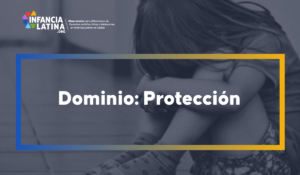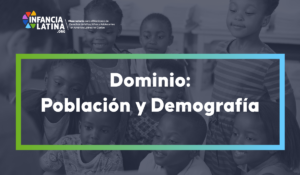Article 6 of the Convention on the Rights of the Child (CRC) is one of the articles considered by the Committee on the Rights of the Child as a “general principle”. It guarantees the fundamental right of the girl and boy to life and the right to survival and development to the maximum extent possible.
On the other hand, Article 24 of the CRC develops the principle set forth in Article 6. In order to apply the principle of non-discrimination (Article 2), the States Parties must guarantee to every child, without any distinction, the right to “more possible high standard of health ”as well as“ services for the treatment of diseases and health rehabilitation ”. They must strive "to ensure that no child is deprived of his right to the enjoyment of these health services."
The provisions of the CRC on health were developed from the provisions contained in the Universal Declaration of Human Rights and in the two International Covenants (on Civil and Political Rights, and on Economic, Social and Cultural Rights), and from the definitions and principles set forth by international organizations such as the World Health Organization (WHO) and UNICEF. The definition of health adopted by the WHO in its Constitution highlights the holistic nature of the Convention and the relationship with the definition of child development promoted by the Convention.
Despite the fact that in Latin America and the Caribbean this right is fully recognized, its adoption and the mechanisms for the population to have access to it, go through the economic difficulty that the region has to ensure its exercise with the elements of quality, availability, accessibility. and acceptability.
The economic history of Latin American countries has deprived them of the necessary resources to invest in better health systems for their population. In particular, General Observation No. 15 of the Committee on the Rights of the Child, on the right of the child to the enjoyment of the highest possible level of health, establishes that all States, regardless of their level of development, must immediately adopt measures to comply with their obligations as a priority, and that regardless of the available resources, the States have the obligation not to adopt retrograde measures that may hinder the enjoyment by the child of their right to health.
The figures can show us the progress in this mandate: in the particular case of resources allocated to early childhood (girls and boys from 0 to 6 years old), for 2013 the 82.9% was directed to care and education and the 8.8% to health, according to the UNICEF report “Investment in early childhood in Latin America”.
Currently, and together with the risk of contracting the COVID-19 virus, Latin American children are exposed to additional risks derived from the measures of school closures and mobility restrictions, such as psychosocial stress and mental disorders not only for them, if not from their caregivers.
In the face of the pandemic, frequent hand washing as a measure to prevent contagion is almost impossible for many children who live in areas where there is no access to clean water or hygiene products (such as in certain peri-urban or rural areas , or in settlements of internally displaced people).
According to the Latin American Water Tribunal, 77 million people still do not have access to water in the region and according to data from the United Nations Educational, Scientific and Cultural Organization (UNESCO), in many countries of In the region, less than 1% of GDP is allocated to infrastructure, which is why 15 million people defecate in the open in Latin America and the Caribbean.
One of the United Nations Sustainable Development Goals is to guarantee the availability of water and its sustainable management and sanitation for all, due to the clear need to ensure that these resources are available to all people.
For its part, the Committee on Economic, Social and Cultural Rights (ESCR Committee) has highlighted in "General Comment 14. The right to enjoy the highest possible level of health", in addition to being acceptable from a cultural point of view, Health facilities, goods and services should also be scientifically and medically appropriate and of good quality.
This requires, among other things, trained medical personnel, scientifically approved drugs and hospital equipment in good condition, clean drinking water and adequate sanitary conditions. Only through investment, a state will be able to face the protection of the health of children and adolescents.
It is important to note that in recent reports, UNDP and UNICE1 warn that due to the suspension or closure of essential health services in Latin America and the Caribbean due to the COVID-19 pandemic, progress in reducing the mortality of women and children in the In the region, there may be a reduction of the 10% in the coverage of essential maternal and child health services, which could cause up to 28,000 deaths of mothers and 168,000 of newborns.
According to the report “Social protection for families with children and adolescents in Latin America and the Caribbean. An imperative in the face of the impacts of COVID-19 ”by ECLAC, in the last decade the proportion of children and adolescents in the region who live in households with at least one member of the health system has increased, given that the proportion of children , girls and adolescents living in households with at least one member of the health system through social security is 45% for 2015 (ECLAC / UNICEF, 2018). As the same body highlights, it is important to consider that access to social security in the child and adolescent population has historically been stratified according to the income level of the households where they live and that the coverage of the contributory pillar continues to be low in the most poor. It is urgent to approach the right to health from a holistic point of view where not only access to health services is contemplated, but also their quality and accessibility for a highly diverse region.
1 Information available in UN News. Available in: https://news.un.org/es/story/2020/09/1481442 [Last revision: April 15, 2021].


